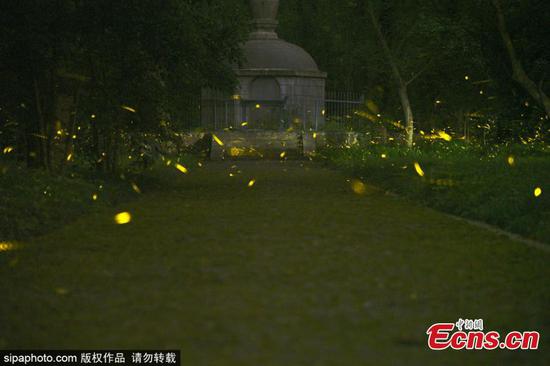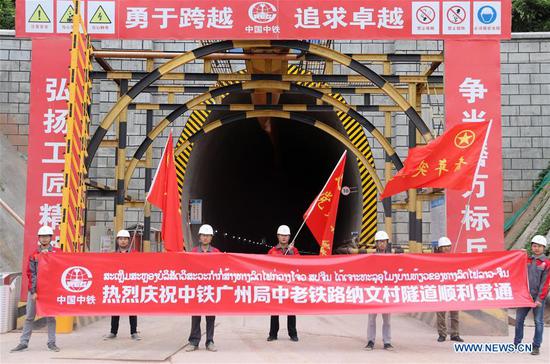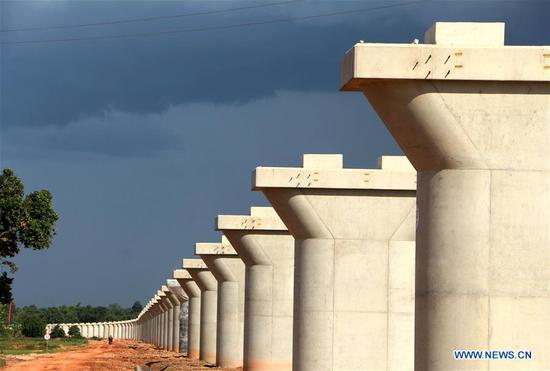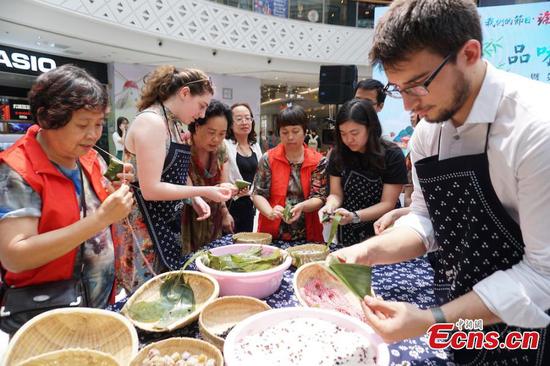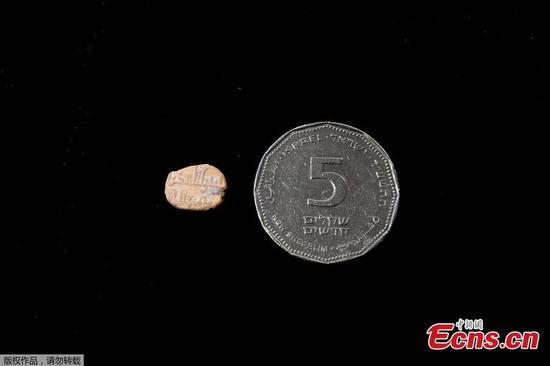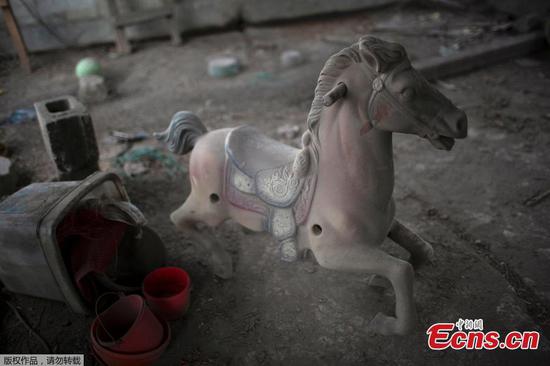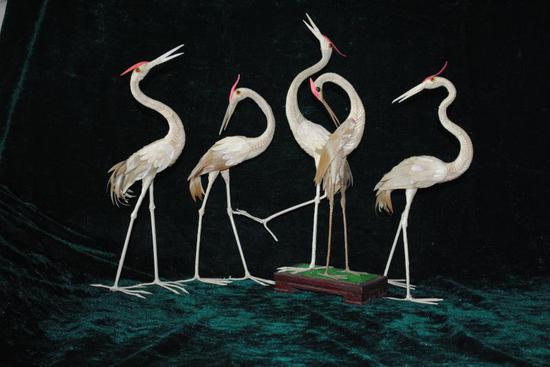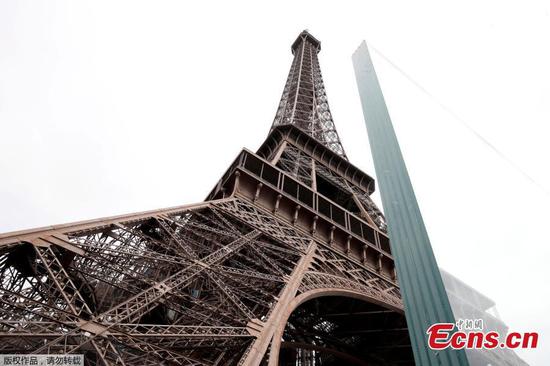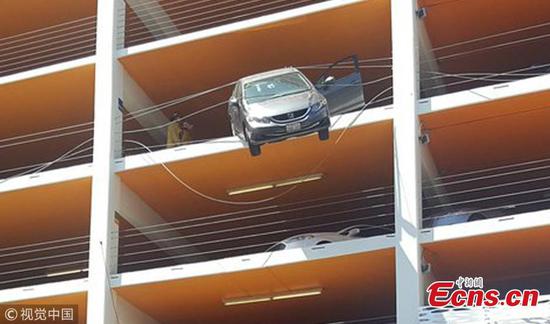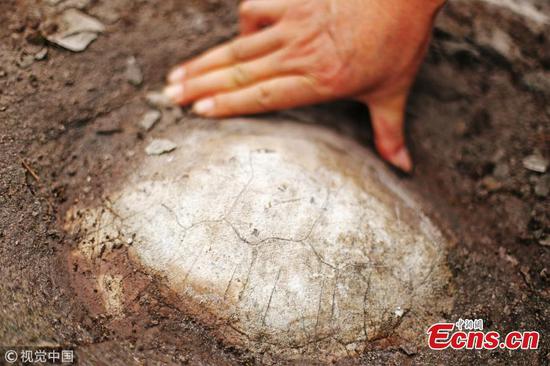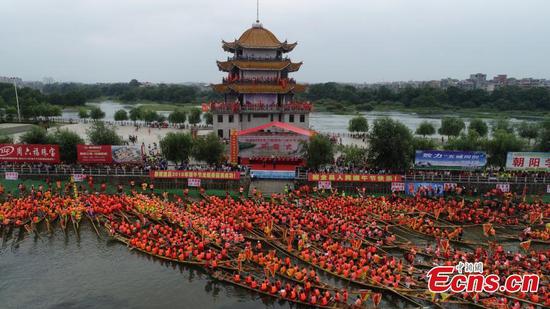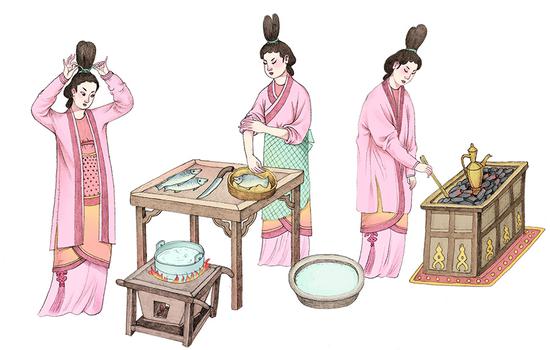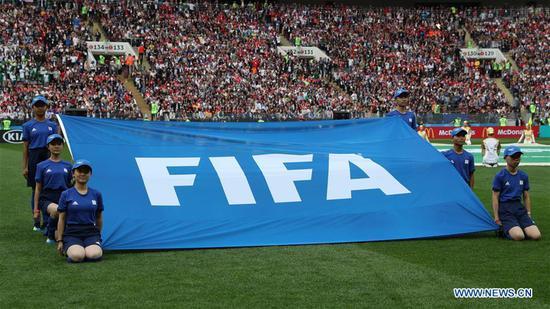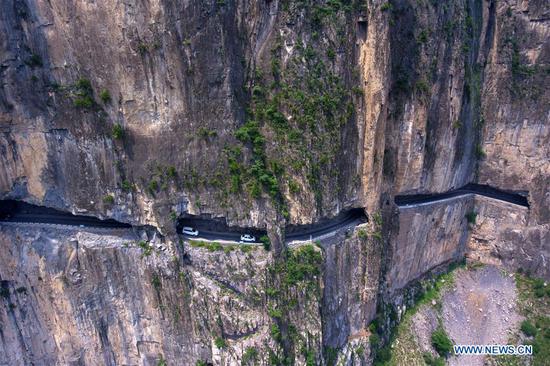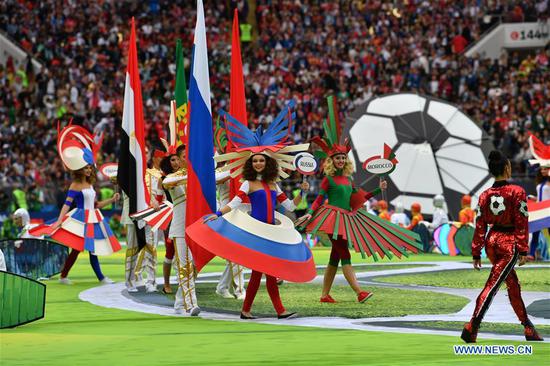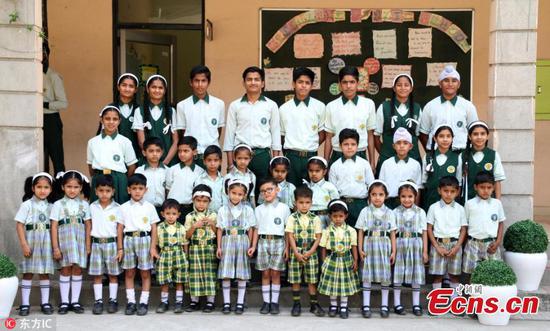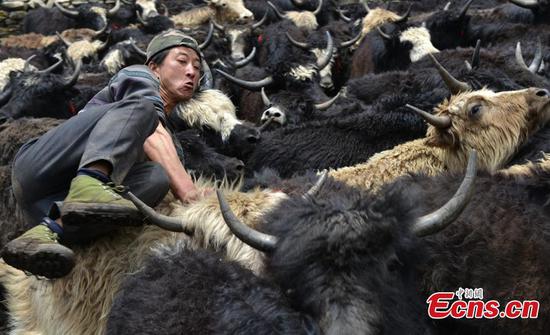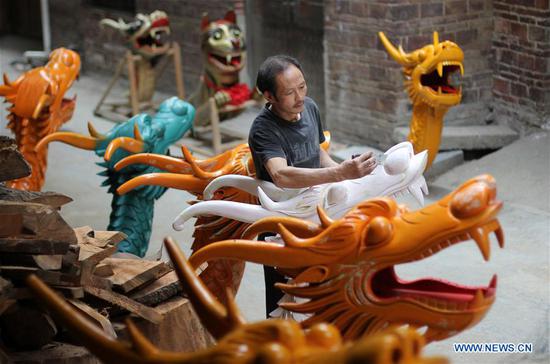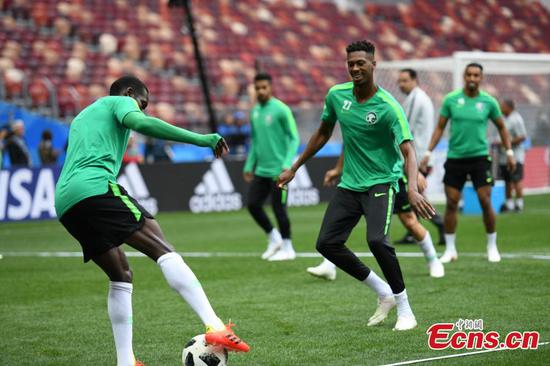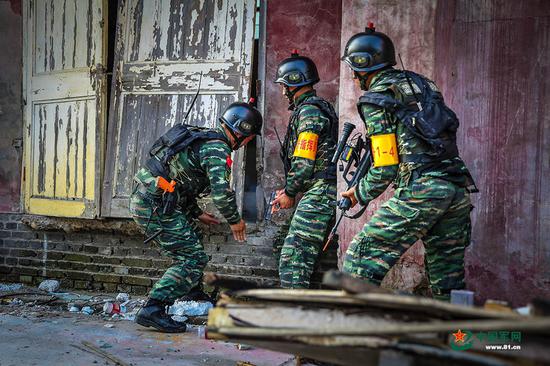The construction on a China-aided new national stadium in Cambodia has gone full steam ahead of the project completion plan set by the end of 2020.
At the site, hundreds of Cambodian and Chinese workers were working feverishly on their assigned duties although the weather was typically scorching in the Southeast Asian nation.
Advanced technology and sophisticated equipment have been used, as a facility for testing the quality of concrete and steel has been erected.
Eight tower cranes have been installed, with two of them can be 115 meters tall. Two giant crawler cranes are capable of lifting up to 180 tons of steel structures. Those monster machines are the biggest-ever cranes used in Cambodia.
Guo Liangliang, senior engineer at the China State Construction Engineering Corporation(CSCEC), which is the contractor of the main stadium, said the construction of the stadium, the main venue for tournaments when Cambodia hosts the Southeast Asian (SEA) Games in 2023, is progressing rapidly.
"The work on the substructure of the 55,000-seat stadium is underway smoothly, as the drilling of more than 1,600 piles had been totally completed," said Guo, who is also the chief engineer of this project. "We see quality as the top priority, and we have set up a laboratory to make sure that the concrete and steel that we use are the best in quality."
Thou Sokleng is a Cambodian engineer in this project. Wearing a white hard hat and safety vest and boot, the thin-looked engineer said he was proud of joining the Chinese firm in developing this main stadium.
"This is a huge project that needs high technical skills and it gives me an opportunity to learn more from Chinese colleagues about techniques in building international standard stadiums," said Sokleng, who earned a bachelor's degree in civil engineering from the Zhejiang Sci-Tech University in Hangzhou city in east China's Zhejiang province.
The engineer said that all workers at the site have been provided with accommodations and three meals a day. "Cooperation and collaboration between Cambodian and Chinese colleagues are good and they always give mutual help," he said, praising Chinese colleagues for their competence and hard work.
The stadium construction is estimated to cost 1.1 billion Chinese yuan (about 170 million U.S. dollars), which is the China's grant aid to Cambodia. Work on the project began in 2017 and was scheduled to be finished at the end of 2020.
INNOVATIVE DESIGN
Wang Qunqing, senior engineer and technical director of the project, said the 55,000-seat stadium covers an area of 16.22 hectares in the heart of the 85-hectare Morodok Techo National Sports Complex located about 15 km north of central Phnom Penh.
He said the 35-meter-tall stadium will be built in the shape of a sailing ship in which its both prows are 99 meters tall, and it will be encircled by an ancient Angkor-style moat and decorated with Rumdul flower (Mitrella mesnyi), which is the flower representing the national symbol of Cambodia.
He added that the 99-meter-tall prows of the sailing ship-liked stadium will depict the gesture of "Sampeah" (placing both palms together at the mouth level in a greeting or a way of showing respect), which truly reflects Khmer culture and tradition.
"The whole stadium was designed in the shape of a sailing ship that implies the bond of traditional friendship between Cambodia and China," Wang said. "This is a large and modern stadium that is being built in line with the top international standard."
SYMBOL OF SOLID SINO-CAMBODIAN TIES
Vath Chamroeun, secretary general of the National Olympic Committee of Cambodia, said Thursday that the stadium will promote Cambodia's prestige and honor on the international arena when the country hosts the SEA Games for the first time in 2023.
"My most impression with the stadium is its shape of a sailing ship that symbolizes the longstanding traditional friendship between Cambodia and China that has existed since the old times," he told Xinhua.
He also impressed with the surrounding moat and decoration of Rumdul flowers at the stadium.
"I believe that with this stadium, the relationship between our two countries will be further deepened."
Chamroeun said the stadium will stand as the symbol of the Comprehensive Strategic Partnership of Cooperation between Cambodia and China, and will open a new historic chapter for the development of sports in Cambodia.
"Besides promoting sports, it will also be a magnet to attract foreign tourists, especially Chinese ones," he said. "Chinese tourists will be proud of this stadium because it is built under the grant aid of the government and people of China."
He said the stadium would be used for the matches of football, rugby and athletics among others.
When the construction is completed, he said the stadium would not only promote sports, but also people-to-people and cultural exchanges between Cambodia and other countries, particularly China.
"The stadium will serve as the main venue for major national and international sports tournaments," he said. "It will also become the symbol of the transfer of culture, knowledge, and skills between Cambodia and the rest of the world."









